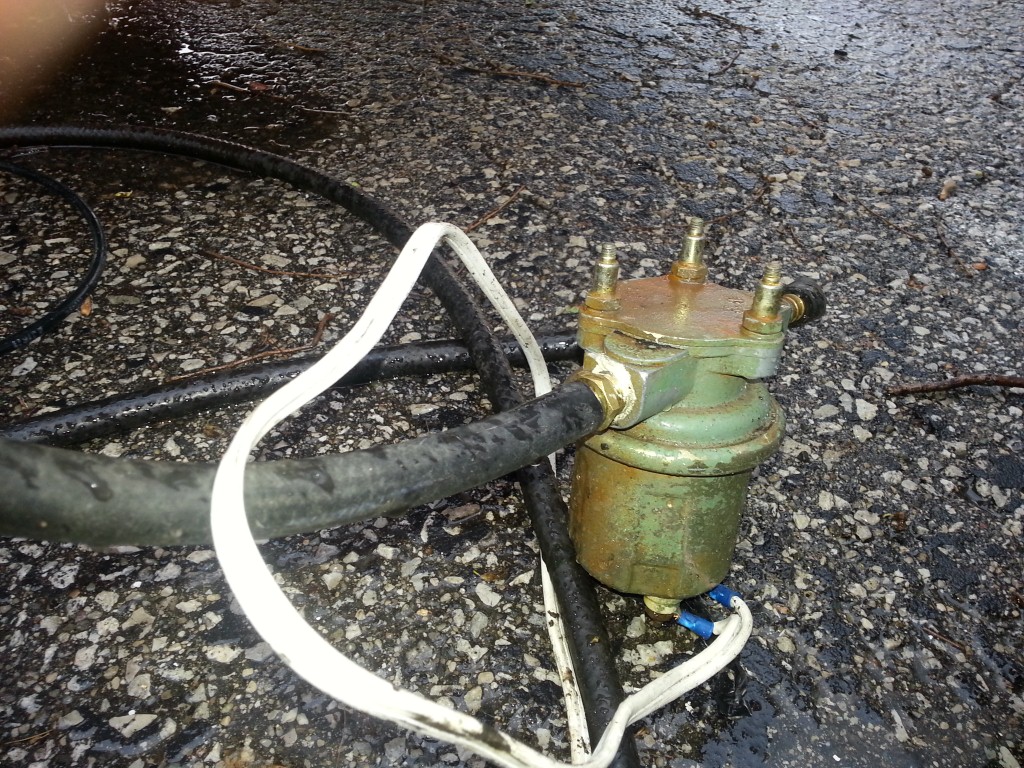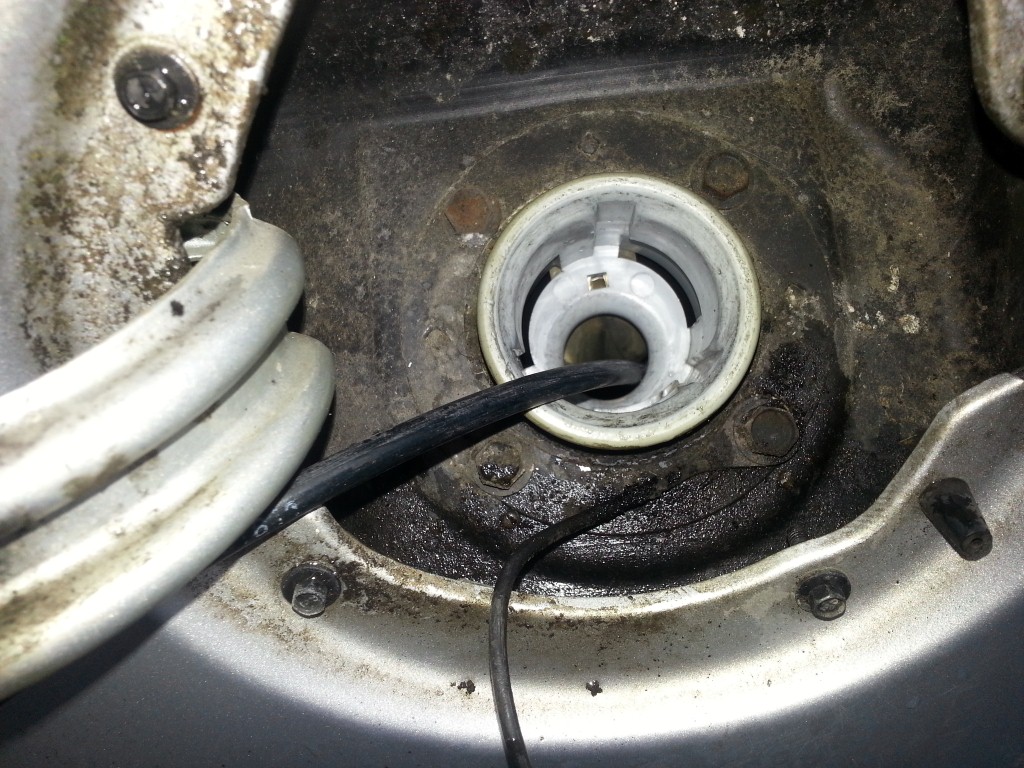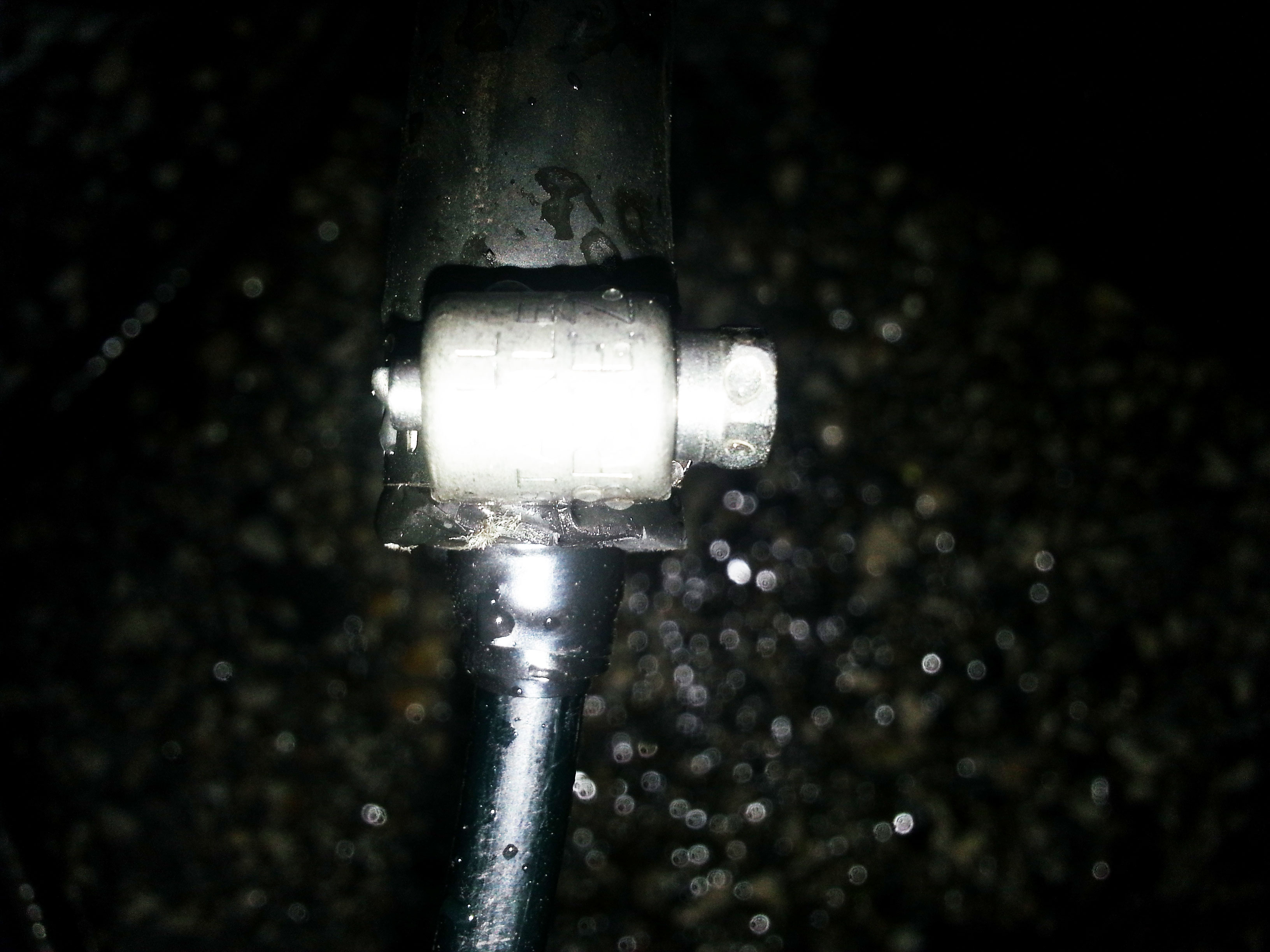Draining the gas/ Changing the fuel pump on a 1999 Mercury Marquis
Short Story: My 1999 Mercury Marquis's fuel pump died. Since the fuel pump is in the gas tank, the tank has to be drained as much as possible to get the pump out. The standard procedure to replace the pump is to drop the tank, replace the pump, and re-install the tank. Since I'm lazy I am going to try and get the pump out without dropping the tank. (Supposidly it can be done - I'll report on this)
So back to removing the gas from the tank; You would think that this would be a non-issue but the car makers have created issues for us DIYers.
Two things come to mind immediately.
\1. Remove the drain plug and drain the tank. Problem: There is no drain plug. (they probably saved 50 cents by doing this)
\2. Insert a hose and siphon out the tank. Problem: The Ford nitwits decided that you should not be able to do this so there is a device in the tank to prevent this.
Solution:
The Ford nitwits overlooked one thing. Although a 3/8" id fuel hose will not make it into the tank for siphoning; a 1/4" outside diameter poly/nylon tube will get through the antisiphon device and allow a pump to be used to remove the fuel from the tank.
My Setup:
Carter Pump attached to extension cord for easy hookup to battery (every motorhead must have one for stuff like this)
(That is not gas on the pavement, that is water as it was raining on and off.)

Battery with extra wire - note that I reused the plug and socket so I could disconnect power quickly without pulling off the battery clips.

The only way to get the gas out! See the 1/4" diameter plastic hose running into the tank. Its stiff enough to be able to snake it past the antisiphon valve (an idiots idea).

Below is the 3/8" ID rubber hose that connects to the Carter Pump and the connection to the 1/4" OD plastic line. I wrapped some electrical tape around the 1/4" line to make it bigger so I could slip the 3/8" ID hose over the taped end and secure it with a hose clamp. Not a permanent want to connect a 1/4" OD line to a 3/8" ID hose but it works for a temporary jury rigged setup.
Transferring 18 gallons of gas out of the tank (it was full) took about 20 minutes.

Changing the Pump
The standard method for changing the fuel pump is to drop the tank, but that is fraught with problems. For one, the tank straps where too short to begin with so reinstalling the tank with the same straps is near impossible. (Gathered from many sources on the web.) So replacement straps and studs have to be purchased. I found a Ford Tech who said the pump could be removed in place. I jacked up the car after draining the tank. Removed the fuel lines that conect to the pump plate on the front of the tank. I cut the wires as the connector is apparently above the tank.. :-( Further evidence of Ford nitwits. I removed the 6 screws holding the pump assembly in the tank and pryed the plate loose with a large screwdriver. The plate, pump and level sensor came out without an issue. I moved the assembly up and over the rear axle, then down and out of the car. Seriously, no big deal. I'm obtaining a replacement pump (not the entire assembly) as the assembly I have is in very good condition and I don't want to risk the sender not working in a replacement assembly. I ordered the parts from Amazon. I ordered an Airtex E2471 and a new infeed strainer along with another fuel filter. The total was about $75.00. Everything should go back together easily.
OK... I received the pump from Amazon along with the strainer (which is not included with the pump). The total bill for parts was about $80. I removed the old pump from the in tank assembly, installed the new pump along with a section of hose and new Stainless steel worm gear clamps. A wiring adapter is included in the kit. I put some gas into a pan and set the pump assembly in it and ran the pump off a spare car battery to make sure it worked before I put it into the tank. I then stripped the wires that I had cut about an inch and a half away from the intank assembly and crimped on insulated butt connectors on the flying leads. This is easier done on a bench than under the car. (Make sure you do a slight tug test to make sure they are secure.) The in tank assembly went back in in the reverse order that it came out. Up and over the rear axle, pickup filter first, then put the float into the tank hole then slide the rest of the assembly into the hole. Secure with the 6 original screws. Then I stripped the wires ends that I cut that were part of the gas tank harness, matched them up with the wires with the butt connectors already installed and crimped the harness back together. I used some liquid electrical tape to seal the crimp joints to eliminate corrosion problems in the future. I installed a new fuel filter, although the old one was probably fine. I put some gas (new gas) into the tank and purged the system - via key on, key off with the fuel line disconnected at the engine injection manifold. When gas came out of the line to the engine I reconnected the fuel line to the engine injection manifold. I started up the engine and checked for leaks. No leaks. :-)
Summary:
If you know how to do this change out, it is easy. The idiots on the web and Youtube always drop the tank which is obviously a waste of time. (A perfect example of the Lemming effect). The deals wants $750 and up to do a pump replacement. Total cost was well under $100 plus my time and it took about 3 hours, but I was very cautious. (Remember, this is not suppose to be possible! ) If I had to do it again, and I had the parts on hand, I could probably do the swap out in about an hour.
Airtex makes oem pumps for the car companies and I have never had a problem with their pumps. I would also trust Carter and FOMOCO of course.
One more thing. In the past, on other cars I have replaced the entire in tank assembly. What I have found is that the gas tank level sender is oftentimes not the same so that screws with the gas gauge. Using the original in tank assembly along with a new pump eliminates this possible snafu. Also, the in tank assembly on this car is stainless steel and very nice. The replacements I have seen are galvanized steel of lower quality.